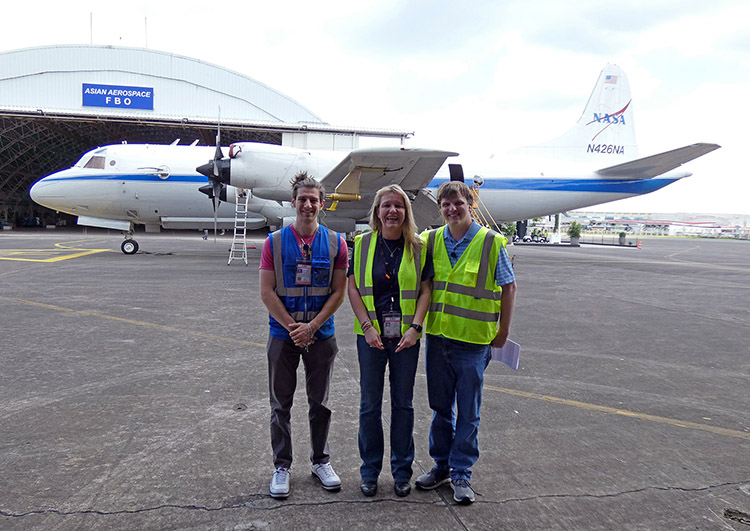ATS researchers investigate atmospheric processes in collaborative campaigns
Colorado State University atmospheric scientists recently embarked on partner field campaigns to study weather phenomena over the Philippines and surrounding sea. The complex processes at play in this part of the world affect southeastern portions of continental Asia, and even weather in the United States. Ultimately, the observations CAMP2Ex scientists took by plane and PISTON researchers made by ship will improve weather and climate forecasts.
CAMP2Ex, the Cloud, Aerosol and Monsoon Processes Philippines Experiment, monitored the impact of smoke and pollution on cloud and aerosol processes. PISTON, or the Propagation of Intra-Seasonal Tropical OscillatioNs, observed how oceanic convective systems organize and evolve in the tropical atmosphere. The two international field teams conducting these studies will be able to compare findings for more comprehensive results.
CAMP2Ex originally was scheduled to take to the sky in 2018, but the campaign had to be delayed a year due to aircraft issues. Once off the ground, flight scientist and Professor Susan van den Heever and her crew aboard the NASA P-3B science aircraft collected a wealth of data that will enhance our understanding of aerosol and cloud processes.
“The campaign was a tremendous success,” van den Heever said. “We flew 19 P-3 science flights. We obtained observations of shallow maritime cumulus clouds, deeper congestus clouds, tropical linear cloud systems, and cold pools within polluted and clean environments, allowing us to examine the impacts of aerosols on these cloud types and processes.”
Read the full Source article, “By plane and by ship, CSU researchers investigate atmospheric processes in collaborative campaigns.”
Photo at top: From left, Alex Sokolowsky, Prof. Susan van den Heever and Sean Freeman stand in front of the NASA P-3B science aircraft they used to take observations for the CAMP2Ex field campaign. Sokolowsky launched most of the dropsondes, van den Heever was one of two primary flight scientists, and Freeman served as flight planner and ground control. Photo by Andrzej Wasilewski



